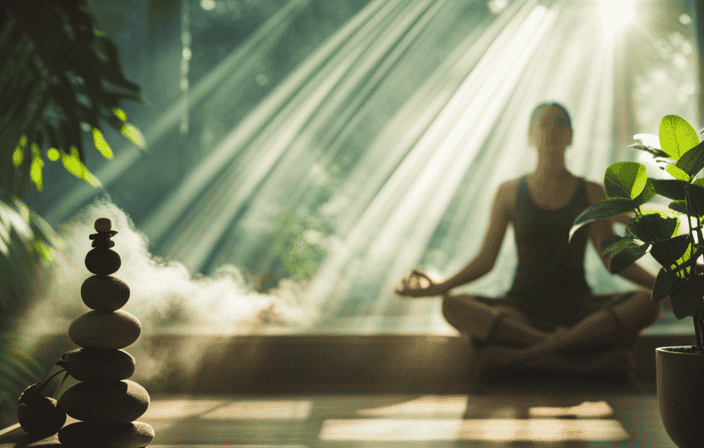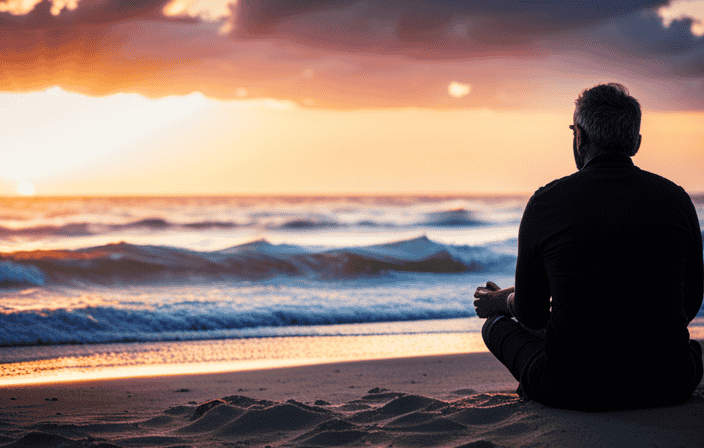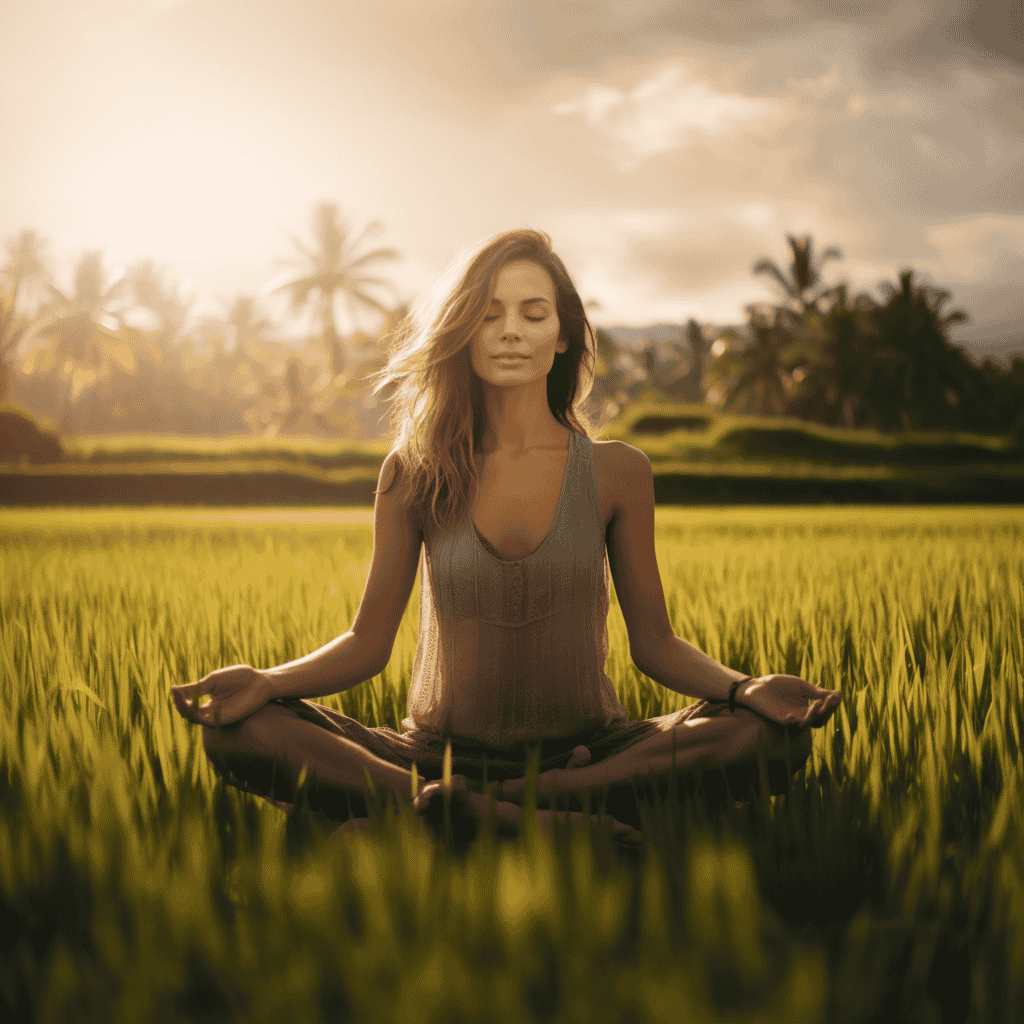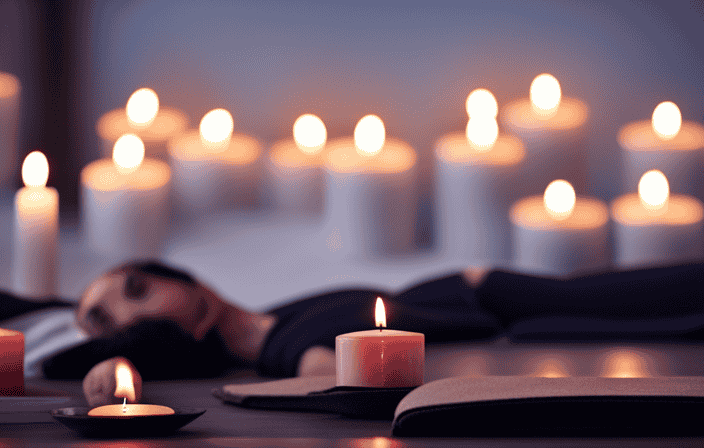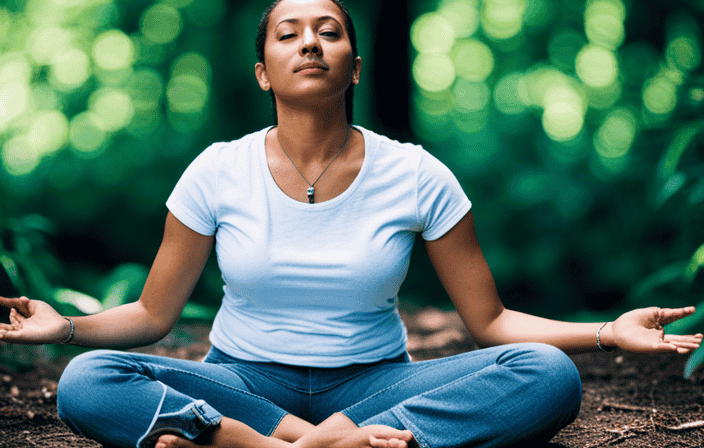Uncover the benefits of yogic relaxation and access a multitude of advantages for both your mind and body. This article will explore the different techniques and benefits that this ancient practice provides.
From reducing stress and improving sleep to enhancing heart health and brain function, yogic relaxation has the potential to transform your well-being.
So, join me on this journey as we unravel the secrets of yogic relaxation and learn how to harness its power for a more peaceful and fulfilling life.
Key Takeaways
- Yogic relaxation involves conscious relaxation of body parts and calming the mind, achieving a state of deep relaxation.
- Yogic relaxation techniques include progressive muscle relaxation, guided imagery, conscious breathing, and gentle stretching.
- Yogic relaxation offers physical benefits such as improved sleep quality, reduced muscle tension and chronic pain, enhanced heart health, and increased flexibility and strength.
- It also provides mental and emotional benefits such as reduced stress and anxiety, improved focus and concentration, enhanced self-awareness and mindfulness, and increased emotional well-being.
What is Yogic Relaxation?
Yogic relaxation is a powerful technique that I have learned about. It is a method of reducing stress and promoting relaxation through various yoga techniques. It involves consciously relaxing different parts of the body and calming the mind to achieve a state of deep relaxation.
The practice of yogic relaxation focuses on releasing tension and restoring balance in both the body and mind. By incorporating breath control, meditation, and gentle movements, it helps to alleviate stress, anxiety, and tension.
Yogic relaxation not only promotes physical relaxation but also helps to cultivate mental clarity and emotional well-being. It is a holistic approach that allows individuals to connect with their inner selves and tap into their body’s natural healing abilities.
Through regular practice, yogic relaxation can provide a sense of peace, rejuvenation, and overall well-being.
Benefits of Yogic Relaxation
Improved sleep quality and a heightened sense of well-being are just a few of the positive effects I have experienced through the practice of yogic relaxation. It has been a transformative journey, and I am excited to share the benefits I have gained.
-
Reduced stress: Yogic relaxation has provided me with a powerful tool to combat stress. By incorporating deep breathing and mindfulness techniques, I have been able to let go of tension and find inner calmness.
-
Pain reduction: I have noticed a significant decrease in physical discomfort after practicing yogic relaxation. It has helped me release muscle tension and alleviate chronic pain.
-
Enhanced mindfulness and awareness: Through yogic relaxation, I have cultivated a greater sense of self-awareness and mindfulness. This has allowed me to be more present in each moment and make conscious choices.
-
Introspection: Yogic relaxation has provided me with a space for introspection and self-reflection. It has allowed me to explore my thoughts, emotions, and beliefs, leading to personal growth and a deeper understanding of myself.
Yogic Relaxation Techniques
Practicing different relaxation techniques has allowed me to explore various methods of finding inner calmness and reducing stress.
Yogic relaxation techniques have been particularly beneficial in achieving this state of relaxation and tranquility. Deep relaxation yoga techniques, such as progressive muscle relaxation and guided imagery, have helped me release tension and enter a deep state of calm.
Quick yoga relaxation techniques, like conscious breathing and gentle stretching, have been useful in calming my mind and body during busy and stressful moments. Instant yoga relaxation techniques, such as the 4-7-8 breathing technique and alternate nostril breathing, have provided immediate relief from stress and anxiety.
Lastly, Yoga Nidra, a guided meditation practice, has been incredibly effective in inducing a state of deep relaxation and promoting restful sleep. These yogic relaxation techniques have become essential tools in my daily self-care routine, allowing me to experience a greater sense of well-being and inner peace.
Frequently Asked Questions
Can Yogic Relaxation be practiced by people of all ages and fitness levels?
Yes, yogic relaxation can be practiced by people of all ages and fitness levels. It is a gentle form of relaxation that can be modified to suit individual needs and abilities.
Is Yogic Relaxation suitable for individuals with medical conditions or injuries?
Yes, yogic relaxation can be suitable for individuals with medical conditions or injuries. It’s like a gentle breeze that soothes both body and mind, promoting healing and reducing stress. However, it’s important to consult with a healthcare professional or yoga teacher for proper guidance and modifications.
How long does it take to experience the benefits of Yogic Relaxation?
It varies for each individual, but in my experience, the benefits of yogic relaxation can be felt after a few sessions. Consistency and practice are key to fully experiencing the positive effects on stress reduction, sleep quality, and overall well-being.
Are there any specific breathing techniques involved in Yogic Relaxation?
Yes, there are specific breathing techniques involved in yogic relaxation. These techniques, such as deep belly breathing and alternate nostril breathing, help to calm the mind, reduce stress, and promote relaxation.
Can Yogic Relaxation be practiced at any time of the day, or is there a recommended time for optimal results?
Yogic relaxation can be practiced at any time of the day, but there is a recommended time for optimal results. It is best to practice in the evening before bedtime to promote better sleep and a deeper sense of relaxation.
Conclusion
In conclusion, the power of yogic relaxation is undeniable. By practicing various techniques, such as Yoga Nidra, individuals can tap into a state of deep relaxation and mindfulness.
The benefits are bountiful, from reduced stress and improved sleep to enhanced heart health and brain function. But beware, proper technique and guidance are essential.
Despite the time constraints and the fact that it may not be everyone’s cup of tea, yogic relaxation holds the key to unlocking a world of tranquility and overall well-being.
So seize the opportunity to soothe your soul and savor the serenity it brings.
